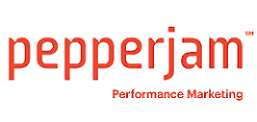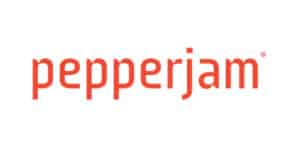While SEO has changed over the past twelve months, there is one detail that will remain the same in 2017. Google is still in business to deliver the best results whenever someone is looking for them. With that understanding, we can strategise our SEO efforts to create better results than our competitors.
As you begin to build your SEO strategy for 2017, here are seven simple SEO tactics to help you plot out how to outrank your competitors in the coming year.
1. Reviewing page CTR data
If anything in SEO is certain, it’s that ranking in top organic positions doesn’t do any good if users aren’t clicking through. Focus on fine-tuning your listings so they earn as many clicks as possible. The metric to help you dial in your messaging would be click-through rate (CTR) in the Google search console. Monitor it closely to spot underperforming landing pages.
One of the easiest SEO tactics is to download your Google Search Console > Search Analytics > Search Traffic > Pages data every week and filter for pages earning a below average click-through rate. These are the ones you’ll want to take a closer look at. At Pepperjam, this report is pulled together weekly to highlight such pages and optimise the title and meta description to make them click-through friendly. Remember that in our mobile-first world, shorter might be better.
2. Reclaiming lost backlinks
Earlier this year, Google’s Andrey Lipattsev announced that the top ranking factors are links, content, and Google’s RankBrain machine learning algorithm.
Quality links are still going to help your organic efforts. One of the easiest ways to grow your link profile is to reclaim the links you’ve previously lost.
An easy method to find broken backlinks is using a tool like Moz’s Open Site Explorer. In the Open Site Explorer > Link Opportunities > Reclaim Links section, you can filter by 4xx level page issues to discover your backlinks which are resolving as a broken page. When a backlink is pointing to a broken page, the value of that link is lost. You can reclaim these opportunities by redirecting your broken pages. Alternatively, you can also run your competitors reclaim links report and reach out to the publisher, letting them know you have an equivalent page that could serve in its place instead.
3. Creating an image sitemap
Searchers like to click on engaging visual elements. If they didn’t, Google would not devote so much processing power to PLAs, images, rich snippets, videos and all the other visually engaging details that currently make up a results page.
If you aren’t including your images in a sitemap.xml file, you’re missing an opportunity to tell search engines about the images on your site. Having an image sitemap is another signal to Google that you want them to include your images in search results whenever it makes sense to. So create an image sitemap.xml and begin to capture more traffic for all of the ‘window shoppers’ browsing the web without knowing exactly what they want in text form.
4. Optimising for speed
In Google’s patent US8645362 B1, page load time is a ranking tiebreaker: “Thus, for two resources that, apart from load times, appear to equally satisfy a user’s informational needs, the user will often select the resource that will likely load the most quickly of the two, resulting in a better user experience.”
This patent is from 2014, so we can only imagine that page speed has become more heavily weighted in their algorithms since then.
You have seen the conversion rate studies – searchers want your pages to be fast. As the patent reminds us, search engines are still in business to deliver the best results they can. In 2016, that means being the quickest, most informative result with the best user experience.
To help speed up landing pages, Google has a scoring tool called Google PageSpeed Insights, which can identify your landing page’s speed optimisation opportunities. Google cites that a score of 85 or above indicates that your landing page is performing well.
One of the easiest speed optimisations tactics is utilising Google’s download optimised image, JavaScript, and CSS resources link which it provided under its Passed rules section of the Page Speed Insights tool.
This download link will contain a zip file with all of the compressed files that Google have informed you about above in their recommendations. While this won’t take care of every opportunity it recommends, it will help you improve your score and potentially assist outranking competitors.
5. Reviewing site navigation
Google’s documentation for the internal link section of the Google Search Console begins with a very insightful sentence: “The number of internal links pointing to a page is a signal to search engines about the relative importance of that page.”
Your navigation is one of your strongest tools for passing link equity across the pages on your website. It’s also a major vehicle for optimising the “number of internal links pointing to a page”. Most likely your site’s navigation is loaded across every single page on your site. It’s your opportunity to send your visitor to the most important pages on your domain from any page they might have landed on. So why wouldn’t you want to revisit and constantly test how you have it laid out?
One of the easiest navigational SEO wins can be adding nouns where it makes sense to. Let’s say you’re a brand that sells jeans online. If your navigation is laid out with words like Women | Men | Kids | Bootcut | Slim| Regular, then it wouldn’t hurt to include the word ‘jeans.’
Some of you might read that and pause to think, “what about Panda and over optimisation for the word ‘jeans’?” Well, Google probably already understood that you sell jeans. Compare your competitor’s navigation. Are they including any nouns? Are they ranking higher than you for the phrases they’re using? If the answer to both of those questions is yes, then it is likely something you’ll want to test.
6. Product-rich snippets & JSON-LD
We’ve worked with many e-commerce clients where adding the structured data into the source code of their product pages took several months before getting the source code to validate correctly. That doesn’t have to be the case anymore, because as of February 3, 2016, Google’s John Mueller announced that the search engine now supports marking up product pages with JSON-LD.
So what is it and how is this an easy SEO tactic?
JSON-LD is javascript object notation-linked data – a vehicle for implementing structured data via javascript. The main benefit here is that you can deploy a script anywhere in the source code of your landing page and that javascript will include the uniform structured data fields required to mark up your page. The true benefit here is that rather than having to mark up exact html attributes within the source code of your page, you can simply deploy a script and gain the exact same benefit as if you marked up each html attribute. It will dramatically speed up the process for implementing structured data for your product pages. It’s a simple SEO tactic to help you get the added CTR benefits of having product rich snippets in the search results.
7. Fixing the duplicate title tags
Canonical tags can aggregate duplicate, or similar, pages together so that search engines can rank your preferred version of the page. If you’re not using canonical tags on your site, then it’s something you’ll want to look into, as your landing pages are likely competition with themselves, with search engines attempting to learn which version you really wanted to rank.
The reason there is power in learning about duplication from Google is because canonical tags are often incorrect, untrusted or missing. You might have thought you already took care of your duplicate content issues. However, it’s ultimately up to Google for the directives they will follow. By looking through your list of duplicate title tags, you can learn about canonical tag issues as well as opportunities to adjust your titles so that truly unique pages have a unique title.
Where can you see a list of duplicate title tags? If you have any, they will be listed in the Google Search console under Search Appearance > HTML Improvements > Duplicate title tags.
Look through this list for any of your important pages. Expand the details of the duplication and ask yourself “are these URLs truly unique?” If so, simply write new title tags to differentiate them. If they aren’t, look at your source code to see if your canonical tags are correct. If they aren’t correct, fix it. If they are and aren’t getting trusted, you most likely have a larger issue with your canonical tags across your domain. Fixing untrusted canonical tags is certainly not an easy SEO tactic. However, in having these details you’ll know what to focus on in the coming months.
Each of these tactics should fit nicely into your strategy for the coming year. However, every website is different and every audience has different demands. While we feel these tactics are simple to adopt, only you can determine the critical objectives that you should focus on for the coming year. Take this list and make it work for your site and target audience.


